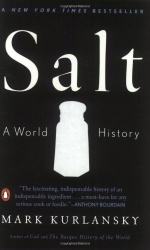|
This section contains 498 words (approx. 2 pages at 400 words per page) |

|
Section 10(Chapter 24 Ma, La, and Mao, Chapter 25 More Salt Than Fish, Chapter 26 Big Lake, Little Salt) Summary and Analysis
Chapter 24 continues the story of salt in China. The Chinese are a culture obsessed with food in all of its varieties. For most of Chinese history, southern Chinese or Cantonese food was considered the best type of Chinese cuisine. After Deng Xiaoping became leader of the communist party in the later part of the 20th century, his home cuisine, Sichuan or la, also became popular. Sichuan cooking uses six traditional flavors in a spicy mix to create a balance of all the elements. The Chinese get most of their salt through the use of sauces and tend to consume large amounts of pork. In many Chinese dishes, saltiness is combined with...
|
This section contains 498 words (approx. 2 pages at 400 words per page) |

|




